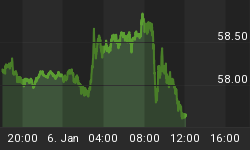For the first time, China has officially become the European Union’s top trading partner, trumping the United States, which has long held that status.
According to the EU's statistics office, Eurostat, last year, mostly impacted by the coronavirus pandemic but also due to the Trump Administration’s economic policies, EU-China trade grew while imports and exports to the United States dropped compared with 2019.
Export of EU goods to China grew by 2.2% and China exports to the EU grew by 5.6% in 2020.
At the same time, EU exports to the US fell by 8.2% and EU imports from the US fell by 13.2%.

Source: Eurostat
China’s trade volume in goods with the EU reached $710 billion in 2020, according to the data.
Both the EU’s exports to and imports from China grew last year, with exports valued at $245 billion and imports worth $465 billion. The trade deficit the EU has with China also rose 9.9%, ballooning from 4200 billion in 2019 to $220 billion last year.
According to Eurostat, the EU bought a large number of pharmaceuticals, medical equipment and medical supplies from China last year.
Ostensibly offsetting that, large-scale public investment in infrastructure fueled demand for European manufacturing goods.
For the past few years, the EU has been trying to intensify its economic ties with China by concluding a bilateral investment pact, also known as Joint Comprehensive Agreement on Investment.
Last December, after seven years of negotiations, the EU and China agreed to sign an investment deal that will give their companies greater access to each other’s markets. The deal is still pending ratification by the European Parliament but once completed, should boost trade even further.
Essentially, the deal would give European companies greater access to Chinese markets. China has committed to being transparent on subsidies for state-owned firms and forced technology transfers.
The deal also makes it easier for European firms to navigate the Chinese paperwork bureaucracy and gain some leverage with the authorities. Previously, EU companies were locked out of many industries in China, where they were forced to partner with Chinese firms or stymied by unfair competition from state-owned enterprises.
There is strong opposition to the deal, with EU lawmakers and human rights activists rallying against it. They believe that the agreement is lacking in enforcement mechanisms, and they criticize the Chinese authorities for their policies toward labor and minorities. Some also believe that the deal could jeopardize relations with the United States.
Even though the trade shift was perhaps ultimately caused by the pandemic, the Trump Administration’s open economic warfare with many countries, the EU included, is leaving a mark on these developments.
Since President Trump started his mandate in January 2017, the US and EU have been at odds over several issues, not the least of which was Trump’s imposition of tariffs on several EU products, prompting the EU to retaliate with its own.
On January 20th, Brussels did little to hide its happiness over Joe Biden’s inauguration and ambitions for the new administration.
Ursula von der Leyen, president of the European Commission, said that “the United States is back and Europe stands ready to reconnect with an old and trusted partner.”
Even though Biden promised to ‘reunite’ with US allies, such as the EU, experts insist the change will not come overnight and certainly won’t undo China’s newfound status as the bloc’s biggest new trading partner.

















